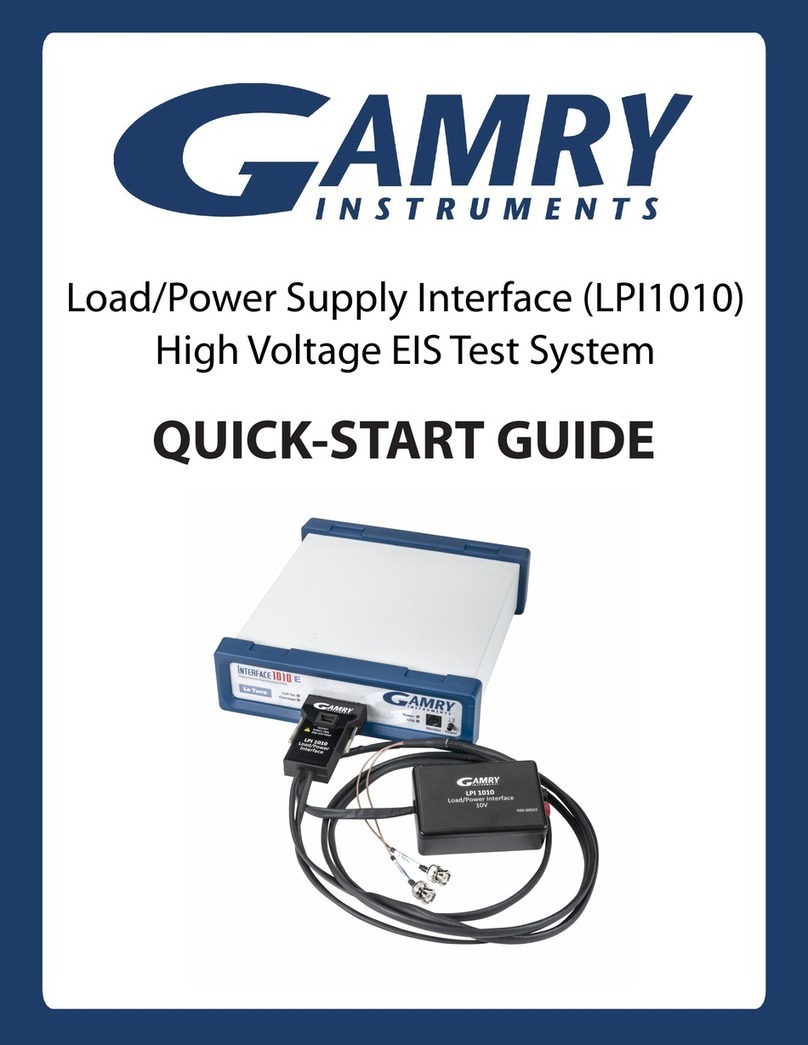
Introduction to the Interface 1000 Personalization Label.......................................3 16
Label Sheet Provided With Each Interface 1000. ..................................................3 16
Label Files on the Gamry Website ........................................................................3 16
Procedure to Change a Label ...............................................................................3 16
Chapter 4 Cell Connections .......................................................................................................4 1
Normal Cell Connections ..................................................................................................4 1
ZRA Mode Cell Connections .............................................................................................4 2
Membrane Cell Connections.............................................................................................4 3
Chapter 5 Panel Indicators and Connectors................................................................................5 1
Front Panel .......................................................................................................................5 1
Power Switch.......................................................................................................5 1
Cell Connector.....................................................................................................5 1
Monitor Connector ..............................................................................................5 1
The Power LED....................................................................................................5 1
The USB LED.......................................................................................................5 2
Cell LED ..............................................................................................................5 2
Overload LED......................................................................................................5 3
Personalization Label Area ...................................................................................5 4
Rear Panel ........................................................................................................................5 4
Power In Jack.......................................................................................................5 4
Chassis Ground....................................................................................................5 4
USB Port..............................................................................................................5 4
User I/O Connector..............................................................................................5 5
Sync Port.............................................................................................................5 5
Chapter 6 Instrument Circuitry...................................................................................................6 1
Interface 1000 Schematic/Block Diagrams .........................................................................6 1
Chapter 7 Stability in Potentiostat Mode ....................................................................................7 1
Capacitive Cells and Stability.............................................................................................7 1
Improving Potentiostat Stability .........................................................................................7 2
Chapter 8 Measurement of Small Signals....................................................................................8 1
Overview..........................................................................................................................8 1
Measurement System Model and Physical Limitations........................................................8 1
Johnson Noise in Zcell .........................................................................................8 2
Finite Input Capacitance ......................................................................................8 3
Leakage Currents and Input Impedance................................................................8 3
Voltage Noise and DC Measurements ..................................................................8 4
Shunt Resistance and Capacitance........................................................................8 4
Hints for System and Cell Design.......................................................................................8 5
Faraday Shield .....................................................................................................8 5
Avoid External Noise Sources ...............................................................................8 5
Cell Cable Length and Construction......................................................................8 5
Lead Placement ...................................................................................................8 6
Cell Construction .................................................................................................8 6
Reference Electrode .............................................................................................8 6
Instrument Settings...............................................................................................8 7
EIS Speed ............................................................................................................8 7
Ancillary Apparatus ..............................................................................................8 7
Floating Operation............................................................................................................8 7
Appendix A Interface 1000 Specifications ...................................................................................9 1
Appendix B Interface 1000 Cell Connector .................................................................................10 1
Appendix C I/O Connectors........................................................................................................11 1
User I/O Connector...........................................................................................................11 1





























